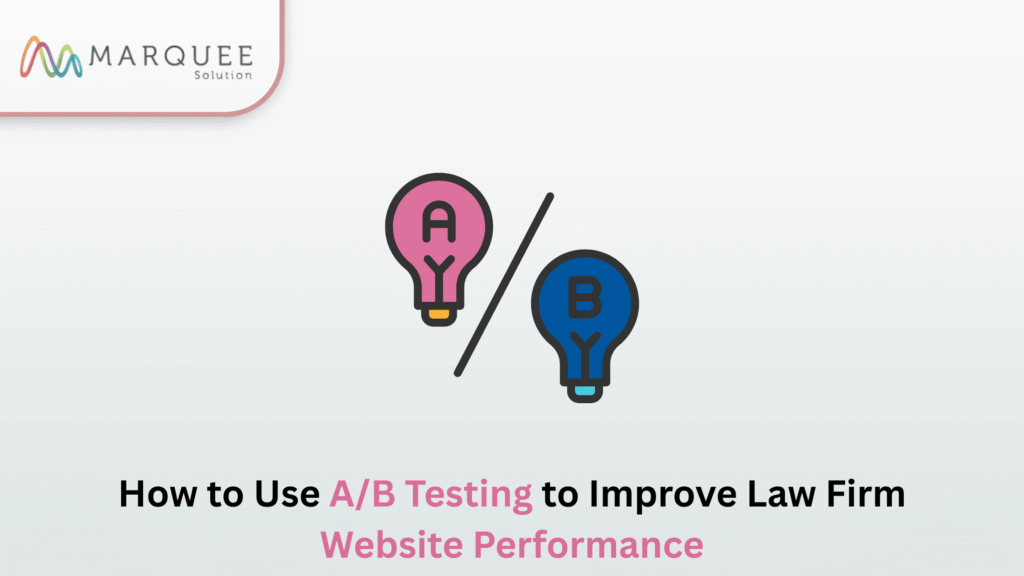In the ever-evolving world of digital marketing, law firms are increasingly recognizing the importance of data-driven strategies to enhance their online presence. One of the most effective tools in this arsenal is A/B testing a method that allows firms to compare two versions of a webpage or element to determine which performs better.Whether you’re trying to increase consultation bookings, improve lead generation, or simply make your website more user-friendly, A/B testing can provide the insights needed to make informed decisions. In this blog, we’ll explore how law firms can use A/B testing to improve website performance, highlight recent digital marketing trends, and share actionable strategies tailored for legal professionals.
Why A/B Testing Matters for Law Firms
A/B testing (also known as split testing) involves creating two versions of a webpage Version A and Version B and showing them to different segments of your audience. By analyzing which version performs better based on specific metrics (like click-through rates, form submissions, or time on page), you can make data-backed decisions to optimize your site.According to a study by Invesp, companies using A/B testing see an average conversion rate increase of 49%. For law firms, this could mean more qualified leads, better engagement, and ultimately, more clients.Recent Digital Marketing Updates Relevant to Law Firms
Digital marketing is constantly evolving, and law firms must adapt to stay competitive. Some recent updates include:- Google’s Helpful Content Update: Prioritizes content that genuinely helps users, making it essential for law firms to create informative, client-focused pages.
- AI-Powered Search: With tools like Google’s Search Generative Experience (SGE), optimizing for conversational queries and user intent is more important than ever.
- Mobile-First Indexing: Google now primarily uses the mobile version of content for indexing and ranking, emphasizing the need for responsive design.
- Call-to-Action (CTA) Buttons
- Button text (e.g., “Get Legal Help” vs. “Schedule a Free Consultation”)
- Color and placement
- Size and visibility
- Contact Forms
- Optimal number of fields (short vs. detailed forms)
- Field labels and instructions
- Placement on the page
- Headlines and Page Copy
- “Experienced Family Law Attorneys in Chicago” vs. “Get Trusted Legal Help for Your Family Matters”
- Formal vs. conversational tone
- Inclusion of keywords or emotional triggers
- Visual Elements
- Hero images vs. video banners
- Attorney headshots vs. team photos
- Different page layouts (single column vs. multi-column)
- Navigation and User Flow
- Menu design and labels
- Placement of key pages (e.g., “Practice Areas,” “About Us,” “Contact”)
- Internal linking strategies
- Google Optimize
- Optimizely
- VWO (Visual Website Optimizer)
- HubSpot (for integrated CRM and testing)
- Combine A/B testing with conversion rate optimization strategies for law firm websites to systematically improve performance.
- Use insights from testing to refine your ad copy, landing pages, and email campaigns.
- Apply findings to your social media content yes, even headlines and visuals can be tested on platforms like Facebook and LinkedIn.
- Share client success stories (with permission) to build trust.
- Post educational content that answers common legal questions.
- Use video snippets to explain complex legal topics in simple terms.



